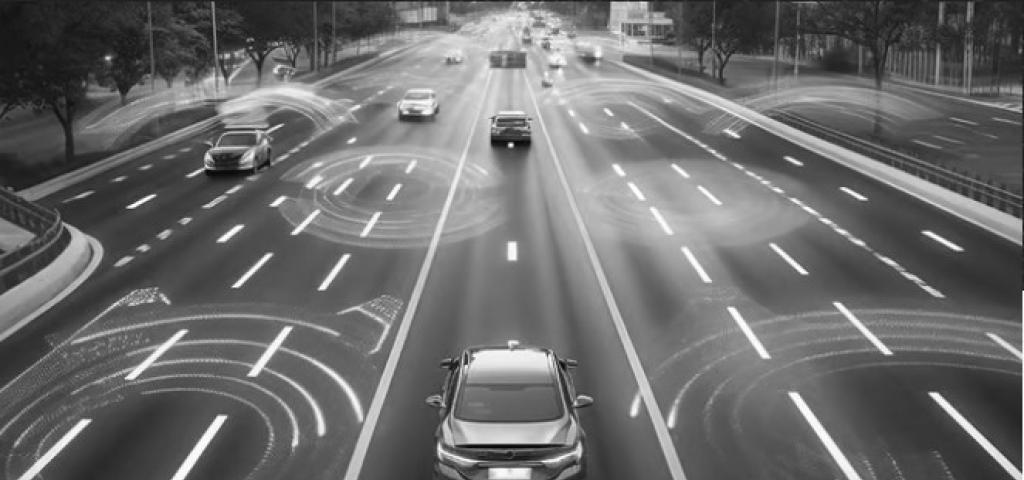
MWC 2024 - Navigating the Future: 5G, Connected Vehicles, and the Road to Monetization
Imagine a bustling city where traffic flows seamlessly, accidents are rare, and vehicles communicate effortlessly with each other. This utopian vision is not a dream but a tangible reality, and significant opportunity, made possible by the convergence of 5G technology and connected vehicles. The potential of this transformative era lies not just in enhanced automotive features or core network advancements but in the realms of edge connectivity, virtual and open RAN. The future is knocking, and it's time to explore the untapped potential waiting at the crossroads of connectivity and mobility.
The 5G Revolution
Recent studies show the global connected car market is projected to reach $361 billion by 2030, with a CAGR of 17.3%. However, the real game-changer, is 5G technology and the potential unlocked with ultra-low latency and high data speeds. According to recent reports by industry leaders, the global 5G connections are expected to reach a staggering 5 billion by 2030, whereas the number of connected vehicles on any network is expected to grow to 367 million by 2027 – a 91% increase from 2023. This growth is not merely a testament to technological advancement but a signal for communication service providers to redefine their strategies.
Edge Connectivity and Virtual/Open RAN
In the world of connected vehicles, edge connectivity is an imperative. By bringing the processing power closer to the source of data, edge computing reduces latency and enhances real-time communication. This is where the true potential of 5G shines, allowing vehicles to make instantaneous and intelligent decisions based on real-time data, creating safer roads and a more efficient traffic flow. This requires a robust infrastructure that supports low-latency applications, and herein lies the opportunity for communication service providers (CSPs). Virtual and open RAN (Radio Access Network) architectures play a pivotal role in enabling this transition. The virtual and dynamic nature of software-defined networking enables CSPs to dynamically allocate resources, optimize performance, and provide the agility needed for the demands of connected vehicles.
Simply put, implementing virtualized infrastructure by adopting virtual RAN creates the foundation for new revenue streams through use cases like C-V2X. This is why embracing and optimizing edge connectivity should be at the forefront of any CSP’s agenda.
Unlocking the Potential of Connected Vehicles with Virtual and Open RAN
Virtual and Open RAN present a frontier for CSPs. These technologies not only offer flexibility and scalability but also enable a more cost-effective and agile network infrastructure. Wind River, a leader in this space, provides a robust platform for deploying virtual and Open RAN, offering a gateway to a new era of connectivity. And, Wind River’s parent company, Aptiv, is known for its expertise used to enable automakers to transition to software-defined vehicles supported by electrified and intelligently connected architectures that will power the future of mobility.
Aptiv's technology, integrated with 5G networks, allows for more sophisticated communication between vehicles, infrastructure, and other components of the C-V2X ecosystem. The unique joint solutions provided by Wind River and Aptiv can lead to improved safety features, enhanced traffic management, and more efficient utilization of resources. As you strategize the evolution of your network, consider the opportunities presented by virtual and open RAN in automotive to stay ahead of the curve.
Monetization: Beyond the Horizon
While the technical marvels of 5G and connected vehicles are awe-inspiring, the true question lies in the realm of monetization. As the automotive industry evolves, so do the opportunities for CSPs to monetize their services. Beyond traditional connectivity offerings, innovative revenue streams emerge. Providing edge computing capabilities to support applications like autonomous driving, augmented reality navigation, and in-vehicle entertainment becomes a lucrative avenue. CSPs can position themselves as enablers of the connected ecosystem, partnering with automotive manufacturers and other stakeholders to create value-added services. And, by tapping into the vast amounts of data generated by connected vehicles, communication service providers can pave the way for new revenue streams. The road to monetization is open, and the time to embark on this journey is now.
Conclusion
In the ever-evolving landscape of connected vehicles and 5G, communication service providers stand at the precipice of a digital revolution. Edge connectivity, virtual and Open RAN are the building blocks of this transformation, and the opportunities for monetization are vast and unexplored. Wind River, with Wind River Studio and expertise in deploying Open RAN, can be your trusted partner on this journey. The question that remains is not whether CSPs can adapt but rather how quickly they can seize the moment and drive innovation in the connected, software-defined vehicle landscape. The road ahead is promising—how will you pave it?
To learn more about Wind River and Aptiv’s solutions for vRAN, OpenRAN, V2X, and the connected, software-defined vehicle, please visit us in our booth at MWC 2024. Click here to learn more and schedule a meeting.
About the author

Paul Miller is the Chief Technology Officer at Wind River

